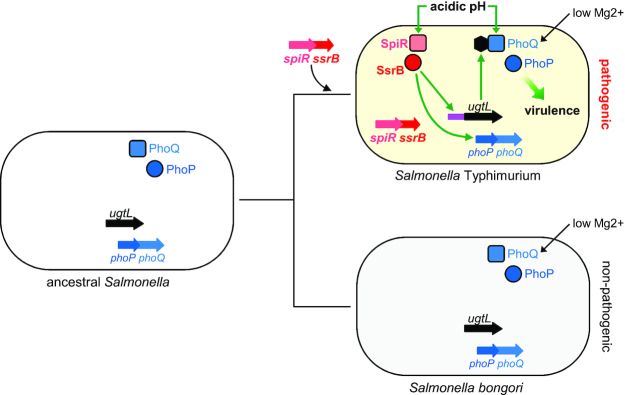Figure 1.
The horizontally acquired regulatory ssrB gene promotes S. Typhimurium virulence by activating the ancestral PhoP/PhoQ system in mildly acidic pH. The ancestral organism that gave rise to S. Typhimurium and S. bongori harbored the ancestral phoP and phoQ genes specifying the PhoP/PhoQ regulatory system and the horizontally acquired ugtL gene. S. Typhimurium acquired the spiR and ssrB genes by horizontal gene transfer, which, together with the evolution of an SsrB binding site in the ugtL promoter (purple), enables activation of PhoP/PhoQ in mildly acidic pH (by promoting transcription of ugtL and phoP genes) and virulence. The non-pathogenic species S. bongori lacks the spiR and ssrB genes and the SsrB binding site in the ugtL promoter, and is unable to activate PhoP/PhoQ in mildly acidic pH. Low Mg2+ activates the PhoP/PhoQ system in both S. Typhimurium and S. bongori. The SsrB protein is a direct transcriptional activator of the phoP gene. Thus, the evolved function of the ancestral regulatory circuit by transferred foreign gene(s) distinguishes organisms’ behavior.

